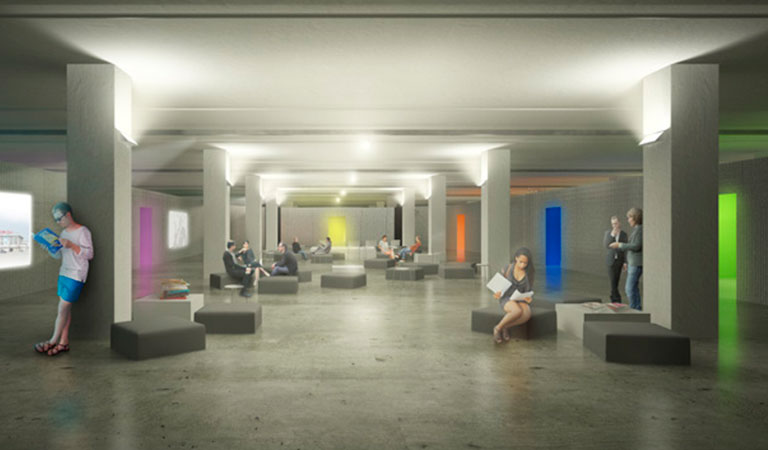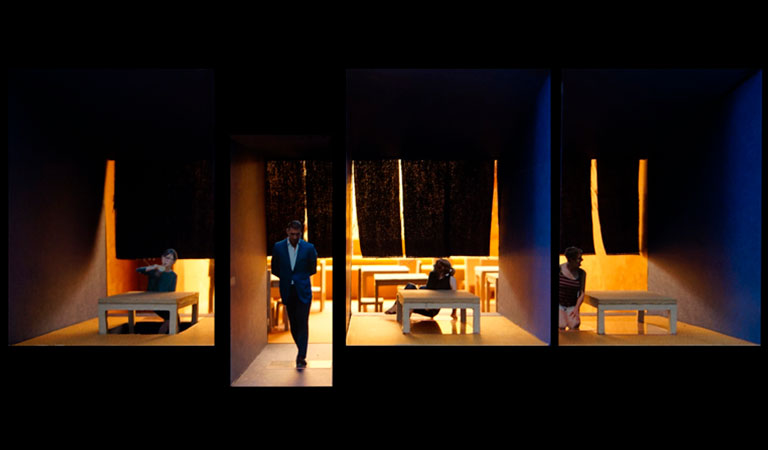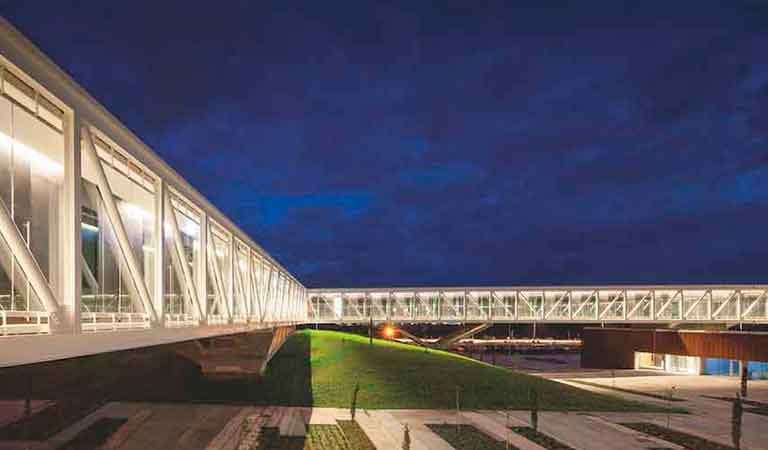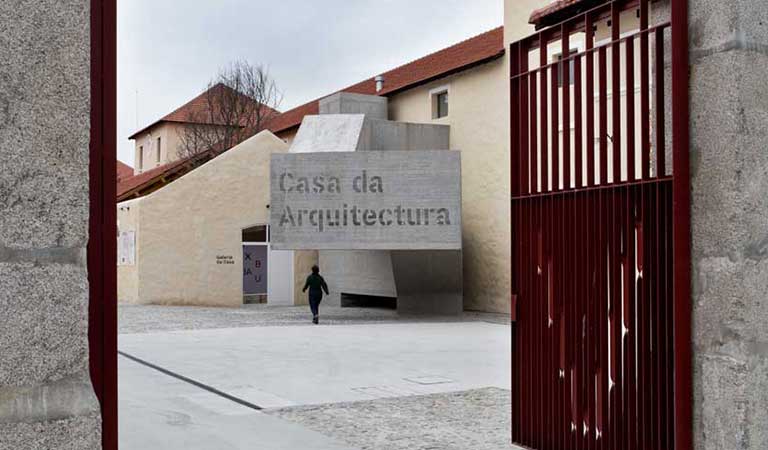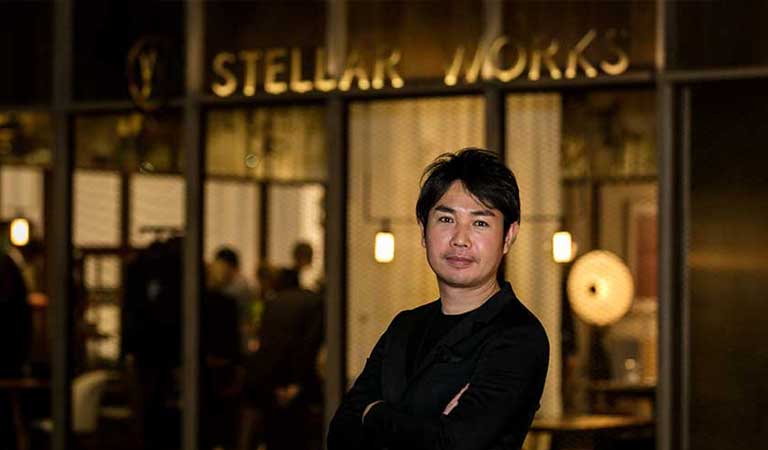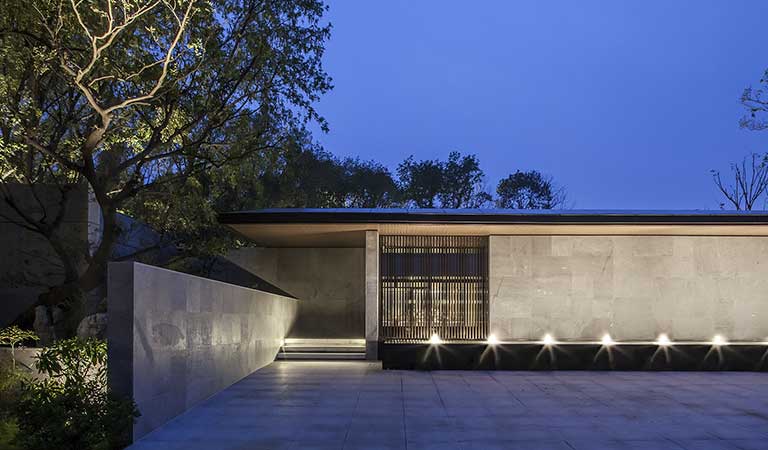Vasco Matias Correia and Patrícia Ferreira de Sousa opened their office to the Describer, and shared with us the recent history and approach of this duo, Camarim Arquitectos.
Closely followed by several international publications, Camarim Arquitectos stands today for a new generation of Portuguese architects seeking to adapt to the national constraints, while bringing to their work a set of accumulated experiences gained working abroad, in Belgium and in the U.K.
Vasco Matias Correia e Patrícia Ferreira de Sousa receberam a the describer no seu escritório, e partilham connosco a recente história e abordagem desta dupla, Camarim Arquitectos.
Seguidos de perto por diversas publicações internacionais, Camarim Arquitectos representa hoje uma nova geração de arquitetos portugueses que procura adaptar-se às condicionantes nacionais, ao mesmo tempo que traz para o seu trabalho um conjunto de experiências acumuladas fruto de um inicio de carreira feito, neste caso, na Bélgica e no Reino Unido.
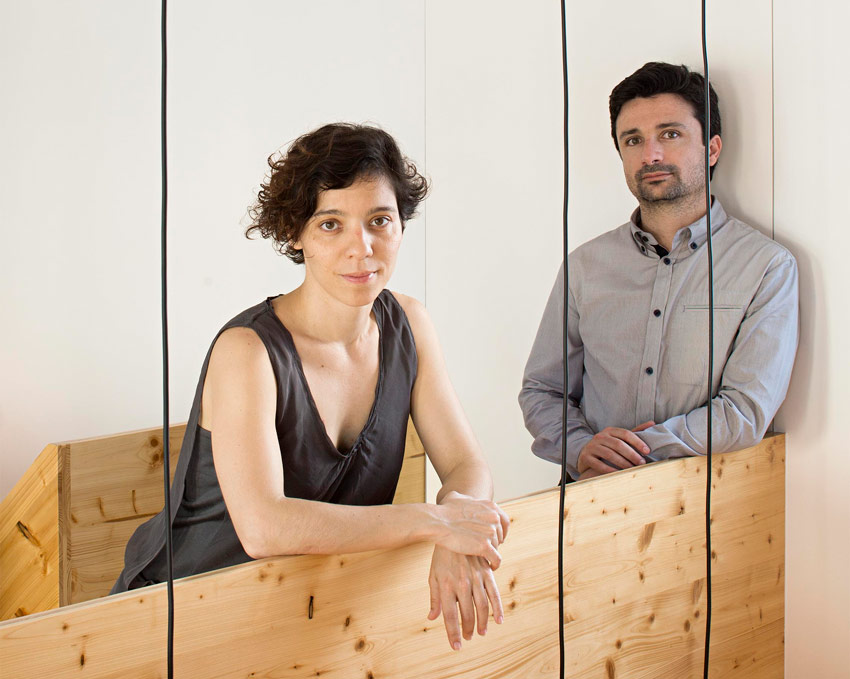
Patrícia Ferreira de Sousa and Vasco Matias Correia
— Office —
Patricia Ferreira de Sousa: We worked together since college, then in the first years of professional experience we were also together at Stéphane Beel in Belgium, and then we also had a professional experience in London, me with Allford Hall Monaghan Morris and Vasco with Norman Foster.
The Camarim office is born with the possibility of doing a first project together, for close relatives, in Brazil. When we went there we realized there was no way we could keep our jobs in London, we had to close that activity, that part of the process. And create the office and work in close proximity on the first site that was this project, called Casa Tropical and located in Ceará, Brazil.
Patrícia Ferreira de Sousa: Desde a faculdade que trabalhávamos juntos, depois nos primeiros anos de experiência profissional também estivemos juntos no Stéphane Beel na Bélgica, e depois também tivemos uma experiência profissional em Londres, eu com os Allford Hall Monaghan Morris e o Vasco com o Norman Foster.
O gabinete Camarim nasce com a possibilidade de fazermos um primeiro projeto juntos, para familiares próximos, no Brasil. Quando fomos lá percebemos que não havia hipótese de mantermos os trabalhos em Londres, tínhamos mesmo de fechar essa actividade, essa parte do processo. E criar o escritório e trabalhar em grande proximidade no primeiro sítio que foi este projeto, que se chama Casa Tropical e fica no Ceará, no Brasil.
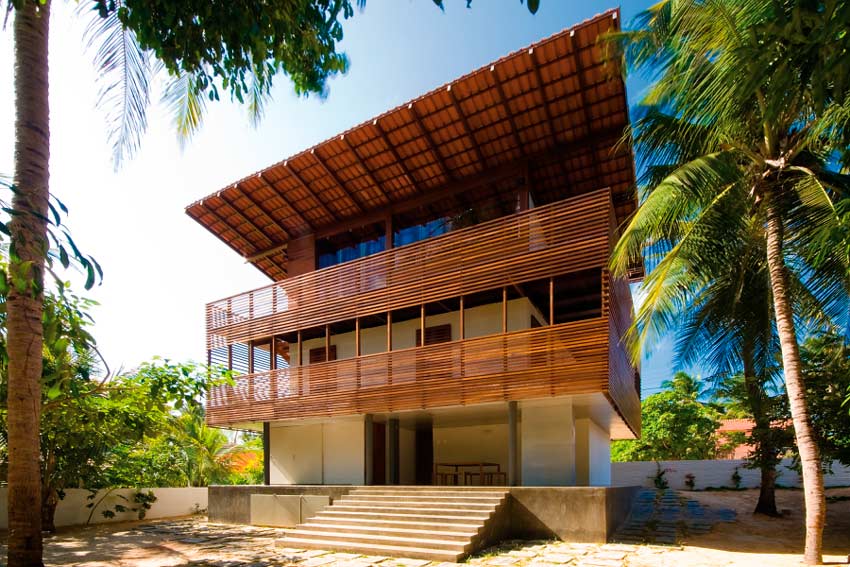
Casa Tropical © Nic Olshiati
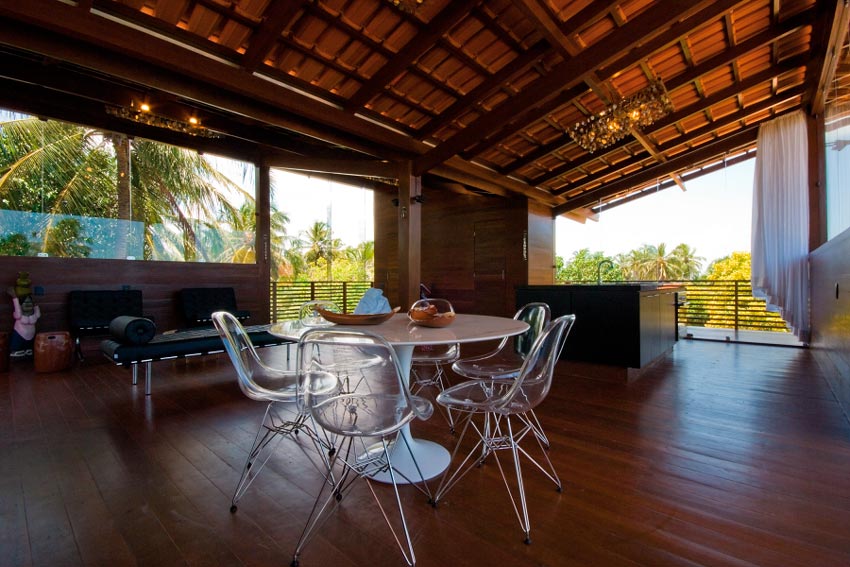
Casa Tropical © Nic Olshiati
Vasco Matias Correia: We always had the desire of opening an office, we didn’t knew if it would be in Lisbon or elsewhere, but I think all the experiences we had and even when we were in Brazil to build our first work, the idea was always to collect these several moments, these several experiences and to bring them all or to continue them all somehow, with our own office.
Vasco Matias Correia: Sempre tivemos a vontade de abrir um gabinete nosso, não sabíamos se seria em Lisboa ou noutro sítio, mas acho que todas as experiências que tivemos e mesmo quando estávamos no Brasil a construir a nossa primeira obra, a ideia sempre foi a de coleccionar esses vários momentos, essas várias experiências e trazê-los todos ou continuá-los todos de alguma forma já com o nosso gabinete.
— Approach —
Patrícia Ferreira de Sousa: I think that more than an approach with a very own language... I can’t define a set of codes that we bring from one process to another. Perhaps that’s the common denominator, it’s precisely to face each project, each process, with its very own identity. Trying to perceive either the physical or legal, or programmatic, or the specifics of the client itself, how we are going to approach this thing. And it’s a path that begins to tread and often follows its very own course with the development of the process.
So the approach turns out to be a bit of that, it's about going to the context and the conditions, and tell a story from what’s the essential, I mean, the story is already written a bit and we are guiding the story according to the new data that shows up along the way.
Patrícia Ferreira de Sousa: Eu acho que mais do que uma abordagem com uma linguagem muito própria… eu não consigo definir um conjunto de códigos que nós trazemos de um processo para o outro. Se calhar isso é que é um denominador comum, é precisamente encararmos cada projeto, cada processo, com a sua identidade muito própria. Tentar perceber quer das condicionantes físicas ou legais, ou programáticas ou das especificidades do cliente em si, de que forma é que vamos abordar a coisa. E é um caminho que se começa a trilhar e muitas vezes segue um rumo muito próprio com o decorrer do processo.
Portanto a abordagem acaba por ser um bocado essa, é ir muito ao contexto e às condições, e contar uma história a partir daquilo que é o essencial, quer dizer, está um bocado escrita já a história e nós vamos guiando a história de acordo com os novos dados que vão aparecendo.
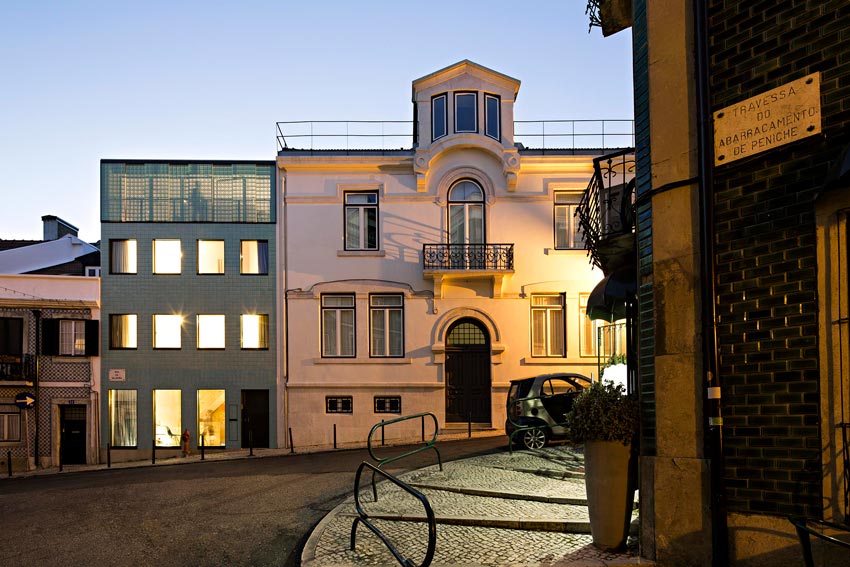
Casa no Princípe Real © Nelson Garrido
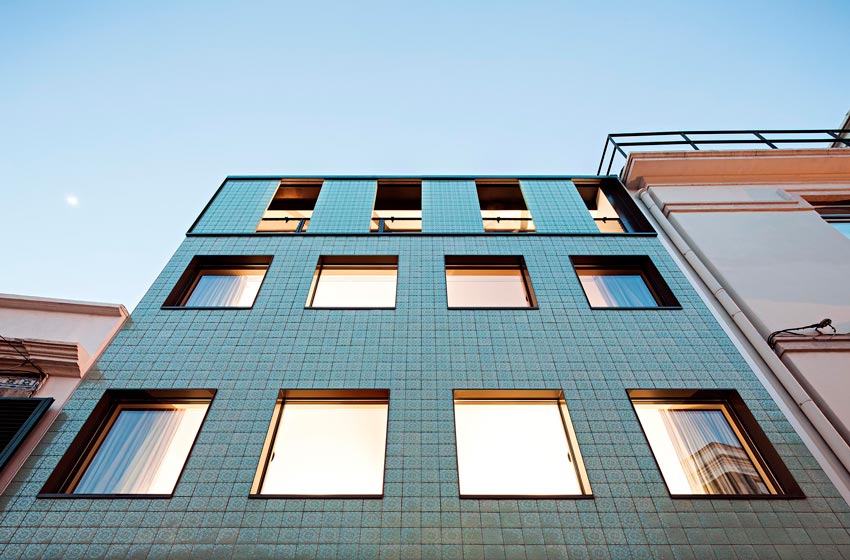
Casa no Princípe Real © Nelson Garrido
Vasco Matias Correia: We like the idea of not having a result set form the start, I mean, the result is largely unexpected or unpredictable at the beginning. And that idea that happens to some architects, in which they have an initial sketch and then it seems that the final work is the materialization of that same sketch, it’s not interesting to us as the idea of having a process that is much more complex, much more curvilinear, much more open to participation and interference from clients or local authorities or from anyone else. And that all these forces are somehow guided or interconnected, and we drive this process in a certain direction, but we don’t define it in terms of image or drafting or material from the very first moment.
To find a common denominator of the projects would be more at this level of driving the process, than at the level of image or a certain visual uniformity that does not interest us.
Vasco Matias Correia: Nós gostamos muito da ideia de não ter um resultado definido à partida, quer dizer, o resultado ser em boa parte inesperado ou imprevisível ao início. E aquela ideia que acontece com alguns arquitetos, em que têm um esquiço inicial e depois parece que a obra final é a materialização desse esquiço, não nos interessa tanto como a ideia de ter um processo que é muito mais complexo, muito mais curvilíneo, muito mais aberto à participação e à interferência seja dos clientes ou das autarquias ou de quem quer que seja. E que todas essas forças são de alguma forma guiadas ou interligadas, e nós conduzimos esse processo numa certa direcção, mas não o definimos em termos de imagem ou de desenho ou de material logo desde o primeiro momento.
A encontrar-se um denominador comum dos projetos seria mais a este nível de condução do processo, do que ao nível de imagem ou de uma certa uniformidade visual que não nos interessa.
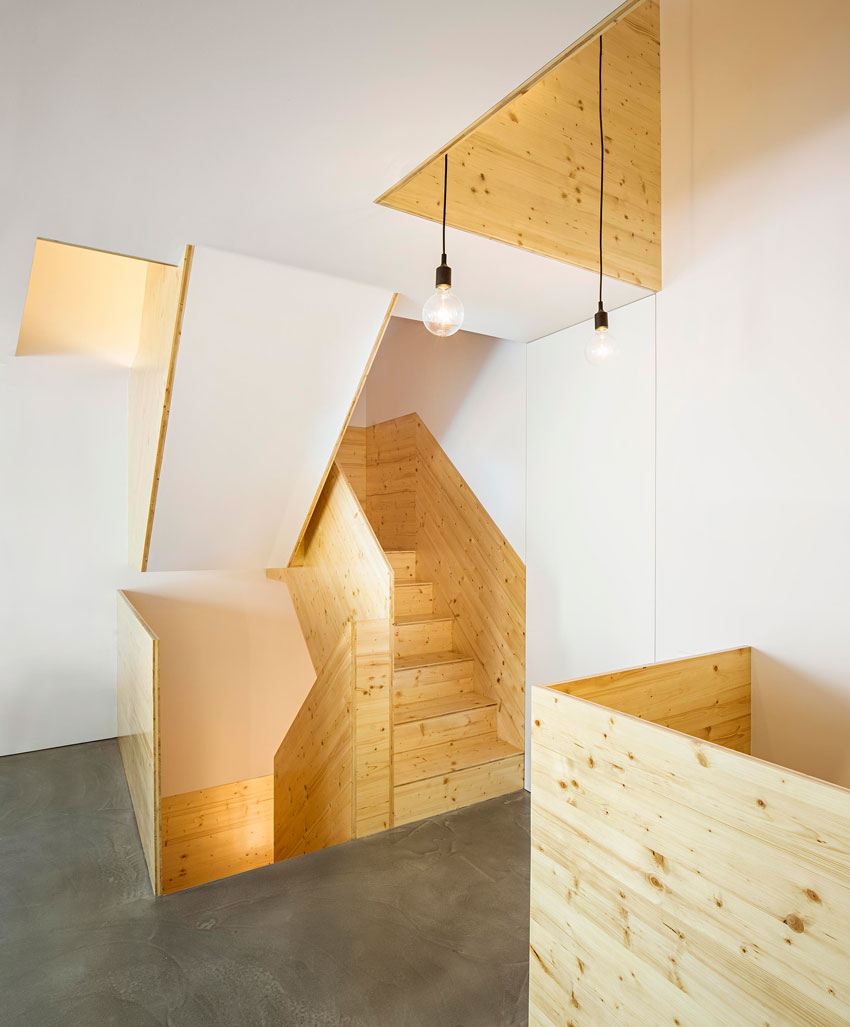
Casa no Princípe Real © Nelson Garrido
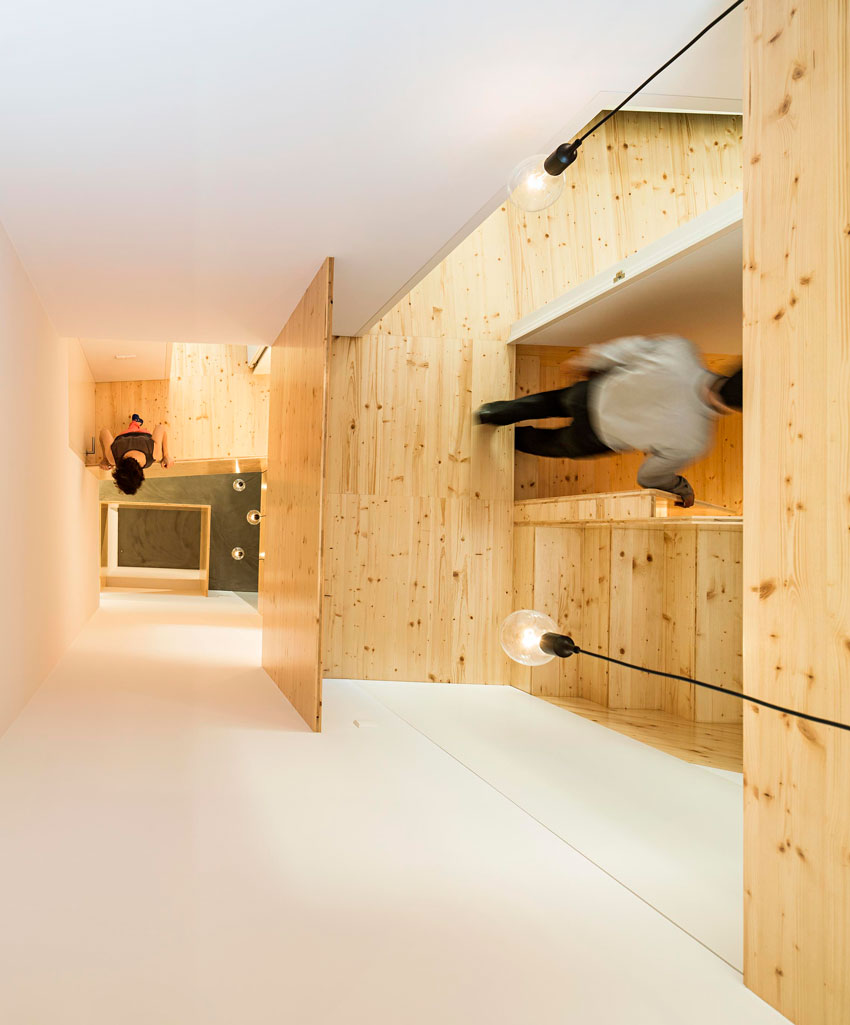
Casa no Princípe Real © Nelson Garrido
— Start —
Vasco Matias Correia: One thing we look for is, what’s more specific or what exists in particular in each situation. That only makes sense in that case and that couldn’t make sense anywhere else. I mean, there are always fundamental aspects of architecture that are permanent in any project, in any situation, in any dimension, in any program, etc; But we like to think of these aspects materialized in an extremely specific way.
Vasco Matias Correia: Uma coisa que nós procuramos é, aquilo que é de mais específico ou que existe de particular em cada situação. Aquilo que só faz sentido naquele caso e que não poderia fazer sentido em mais lado nenhum. Quer dizer, há sempre aspectos fundamentais da arquitetura que são permanentes em qualquer projeto, em qualquer situação, em qualquer dimensão, em qualquer programa, etc; mas gostamos é de pensar nesses aspectos materializados de uma forma extremamente específica.
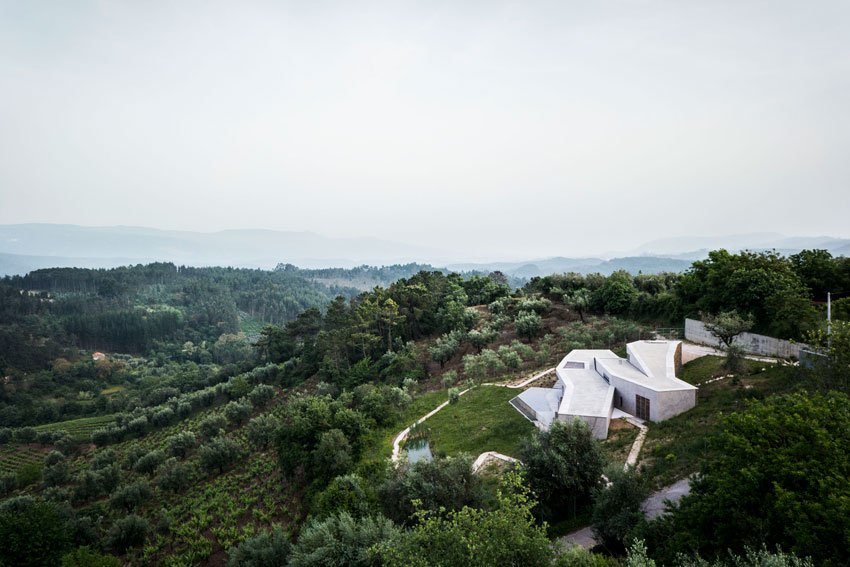
Casa na Gateira © Nelson Garrido
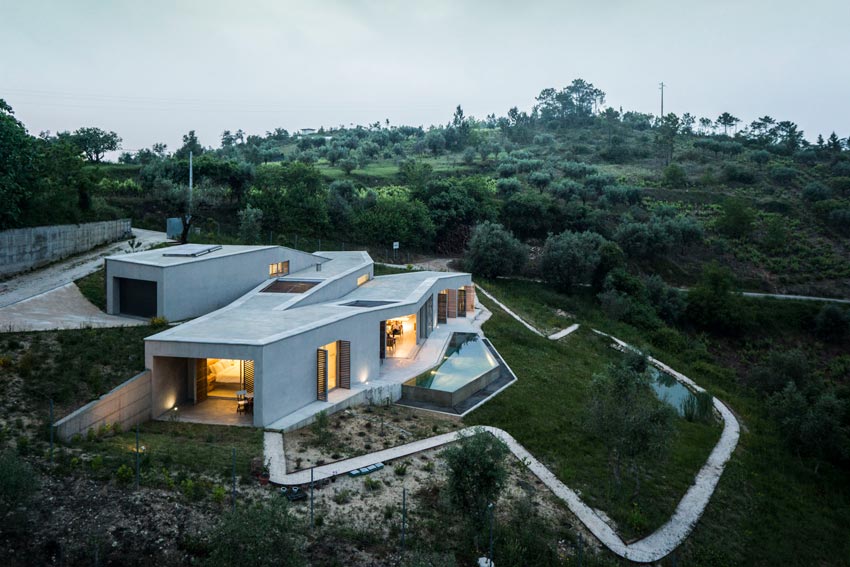
Casa na Gateira © Nelson Garrido
Patrícia Ferreira de Sousa: And what always happens to us is that we don’t just do one project, we end up doing 3, 4, 5 projects and present all of this different solutions to the clients. So there’s a very big input from the clients right from the beginning, and sometimes there are solutions that have flaws but that we purposely present to the clients. We don’t mind exposing these failures because they generate a discourse and a reflection, which allows us to grasp what’s good and what’s bad together with the other proposals, and to go on to another phase with an option made by the clients, and with the advantages and disadvantages that we collect, and go on moving forward.
It’s an interactive process in which the client participates a lot, and in which the project is takes on a body and takes on a shape, because all of these characteristics are exposed and subjected to scrutiny and criticism, I mean, the client is an actual part of the process on the project.
Patrícia Ferreira de Sousa: E o que nos acontece sempre é que não fazemos um projeto, acabamos por fazer 3, 4, 5 projetos e apresentamos todas essas soluções diferentes aos clientes. Portanto acaba por haver uma participação muito grande dos clientes desde o inicio, e às vezes há soluções que têm falhas mas que nós propositadamente apresentamos aos clientes. Não nos importamos de expor essas falhas porque geram um discurso e uma reflexão, que nos permite agarrar no que é bom e no que é mau juntamente com as outras propostas todas, e partir para uma outra fase com uma opção feita pelos clientes, e com vantagens e desvantagens que recolhemos, e ir seguindo por aí adiante.
Portanto é um processo interativo em que o cliente participa muito, e em que o projeto vai tomando um corpo e vai tomando forma, porque todas estas características vão sendo expostas e submetidas ao escrutínio e à critica, quer dizer, o cliente faz mesmo parte do processo de projeto.
— Materials —
Patrícia Ferreira de Sousa: I think that as a rule we don’t have pre-defined materials, it’s true that we have materials that we like a lot right, we like materials with thickness, with a nature that tell their own story, that age well with time. But I mean we like materials as different as a block of stone or timber, tiles. We work a lot with filters for example with glass, it has several layers that allow to reflect totally or to be totally transparent, this comes following what we like to explore in architecture, the ability to respond in different ways to the context according to the way that same context changes.
This filter, this ability to see or not to see, from time to time depending on the conditions, is what we’re interested in exploring. But we don’t have a formula, I mean, we don’t have materials that we always use, we have characteristics that are expressed in materials that we like to explore, it’s more about that.
Patrícia Ferreira de Sousa: Eu acho que por regra nós não temos materiais definidos, é verdade que temos materiais de que gostamos muito não é, gostamos de materiais com espessura, com uma natureza que contam a sua própria história, que envelhecem bem com o tempo. Mas quer dizer gostamos de materiais tão distintos como um bloco de pedra ou um tronco, azulejo. Trabalhamos muito com filtros por exemplo com o vidro, que vai tendo várias camadas que permitem reflectir totalmente ou serem totalmente transparentes, vem na sequência daquilo que nós gostamos de explorar na arquitetura, ter uma capacidade de responder de formas diferentes ao contexto de acordo com a maneira com que o contexto vai variando.
Esse filtro, essa capacidade de ver ou de não ver, de vez em quando dependendo das condições, interessa-nos explorar. Mas não temos uma fórmula, quer dizer não temos materiais que usamos sempre, temos características que são expressas em materiais que nós gostamos de explorar, é mais isso.
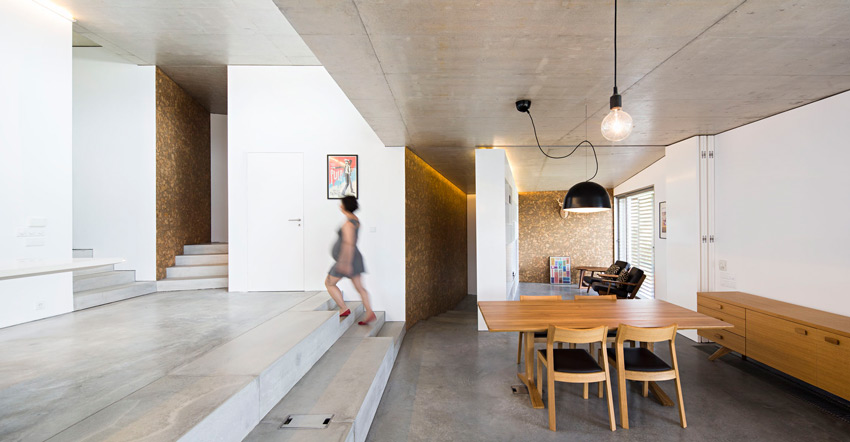
Casa na Gateira © Nelson Garrido
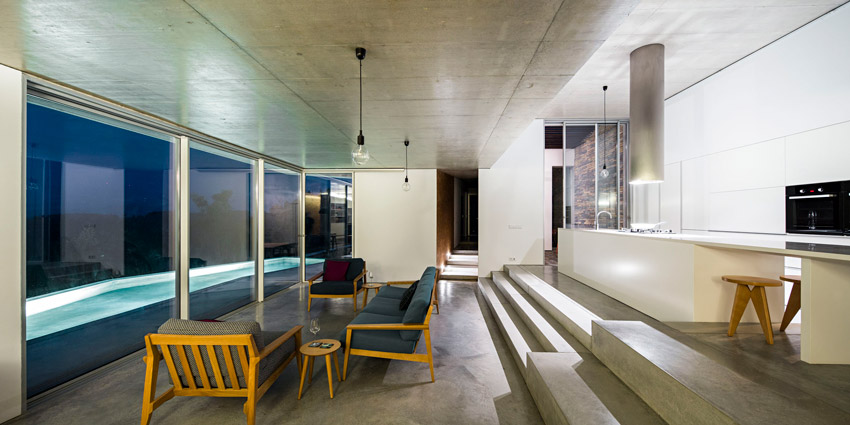
Casa na Gateira © Nelson Garrido
Vasco Matias Correia: I think one thing we like about materials is the ability they have to endure time, I think that's important. That they can get old or can remain through time, and that they often gain qualities over time.
And also materials that are sometimes obvious or even cheap, and are often used in cases of bad architecture or naive architecture, so to speak, for which we only have bad examples, and to be able to use them in a way that’s surprising and is also particularly suited to a certain project. We like that a lot.
Vasco Matias Correia: Eu acho que uma coisa de que nós gostamos nos materiais é a capacidade de aguentar o tempo, acho que isso é importante. E que consigam envelhecer ou consigam permanecer ao longo do tempo, e que muitas vezes ganhem qualidades com o tempo.
E também materiais que às vezes são evidentes ou até baratos, e que muitas vezes são usados em casos de má arquitetura ou de arquitetura naive digamos assim, para os quais só temos más conotações, e poder usá-los de uma outra forma que seja surpreendente e que seja também particularmente adequada a um certo projeto. Isso gostamos bastante.
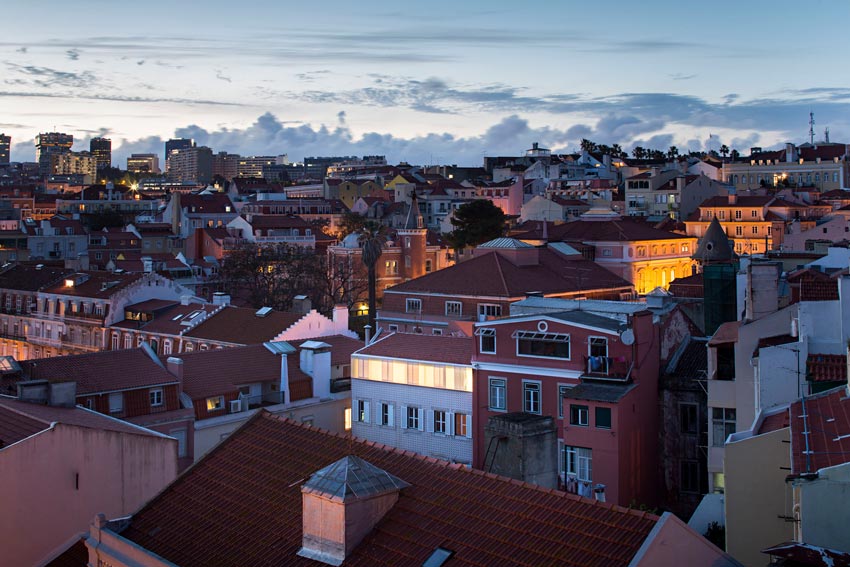
1757 © Nelson Garrido
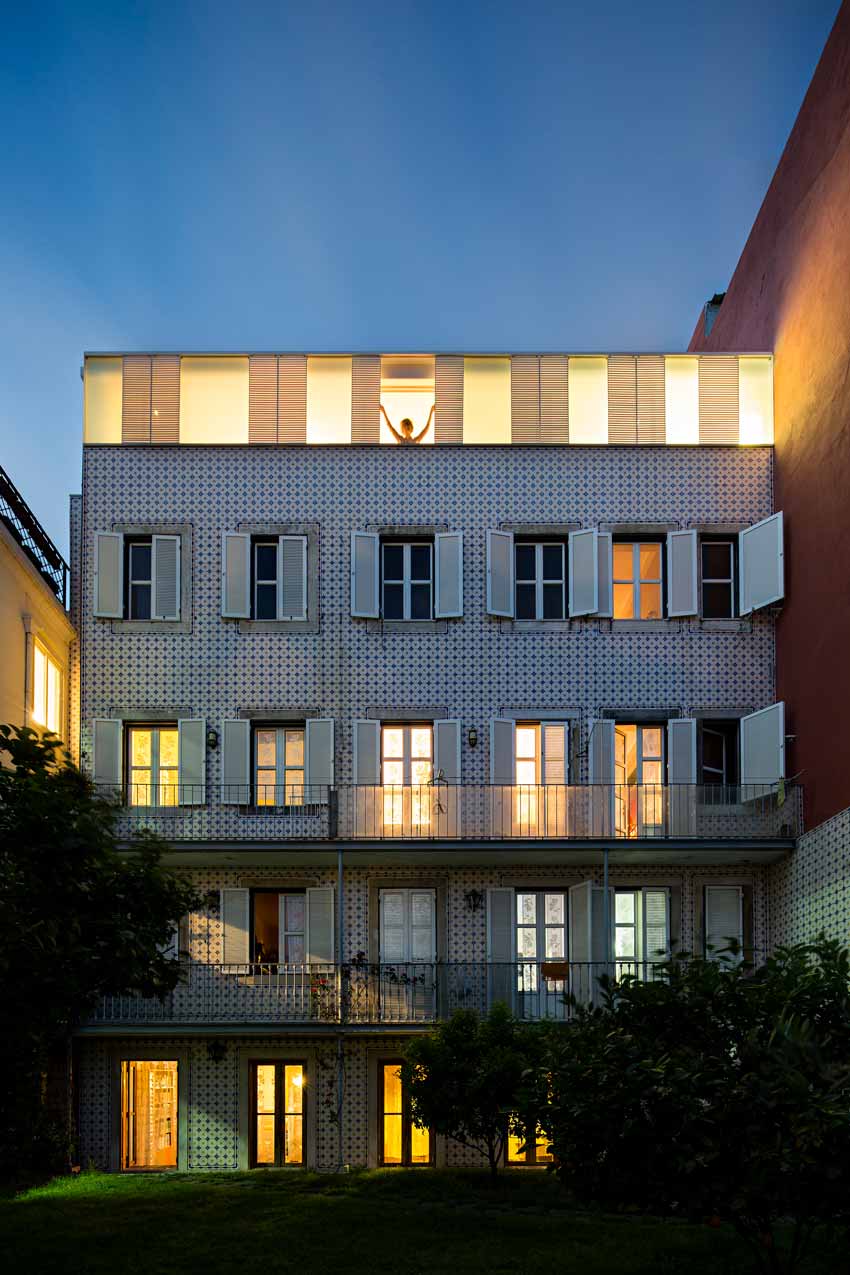
1757 © Nelson Garrido
— Influences —
Patrícia Ferreira de Sousa: It’s easier for me to resort to the reasoning behind a work I see in a museum or a play I hear from an orchestra than to turn immediately to an architect's work, because it’s very related. Our colleagues use the same tools as we do, and I can identify myself more, it helps me more, to see works of art and the explorations that artists make on a certain theme and then formalize over a sculpture, a painting, or a "happening". But the thinking behind or what they wanted to express, or the way they managed to express it, is a more useful tool for me in order to be able to think of architecture rather than resorting to works done by our colleagues.
For example, an artist that we both like very much is Dan Flavin, and we are always touched when we go to a space and we see that he connects a flourishing colored lamp, the capacity that that lamp has to impregnate everything of light and color and completely change the space, which are sometimes walls, white ceilings with nothing.
Dan Flavin's exploration of his work is something that inspires us, and we have projects where we use that tool to be able to explore space and show the same space in different ways.
Patrícia Ferreira de Sousa: É mais fácil recorrer ao pensamento por trás de uma obra que eu vejo num museu ou de uma peça que eu ouço de uma orquestra, do que recorrer imediatamente a uma obra de um arquiteto, porque está muito relacionado. Os nossos colegas usam as mesmas ferramentas que nós, e eu consigo identificar-me mais, ajuda-me mais, ver obras de arte e as explorações que os artistas fazem sobre determinado tema e que depois formalizam sobre uma escultura, uma pintura, o que seja, um “happening”. Mas o pensamento por trás ou o que eles quiseram exprimir ou a maneira como conseguiram exprimir, é uma ferramenta mais útil para eu conseguir pensar em arquitetura do que propriamente recorrer a obras feitas por colegas.
Por exemplo um artista que nós os dois gostamos muito é o Dan Flavin, e ficamos sempre sensibilizados quando vamos a um espaço e vemos que ele liga uma lâmpada florescente colorida, a capacidade que aquela lâmpada tem de impregnar tudo de luz e de cor e de mudar completamente o espaço, que às vezes são paredes, tetos brancos sem nada.
Essa exploração que o Dan Flavin faz com a obra dele é uma coisa que nos inspira, e que nós temos projetos em que usamos essa ferramenta para conseguirmos explorar o espaço e mostrar o mesmo espaço de formas diferentes.
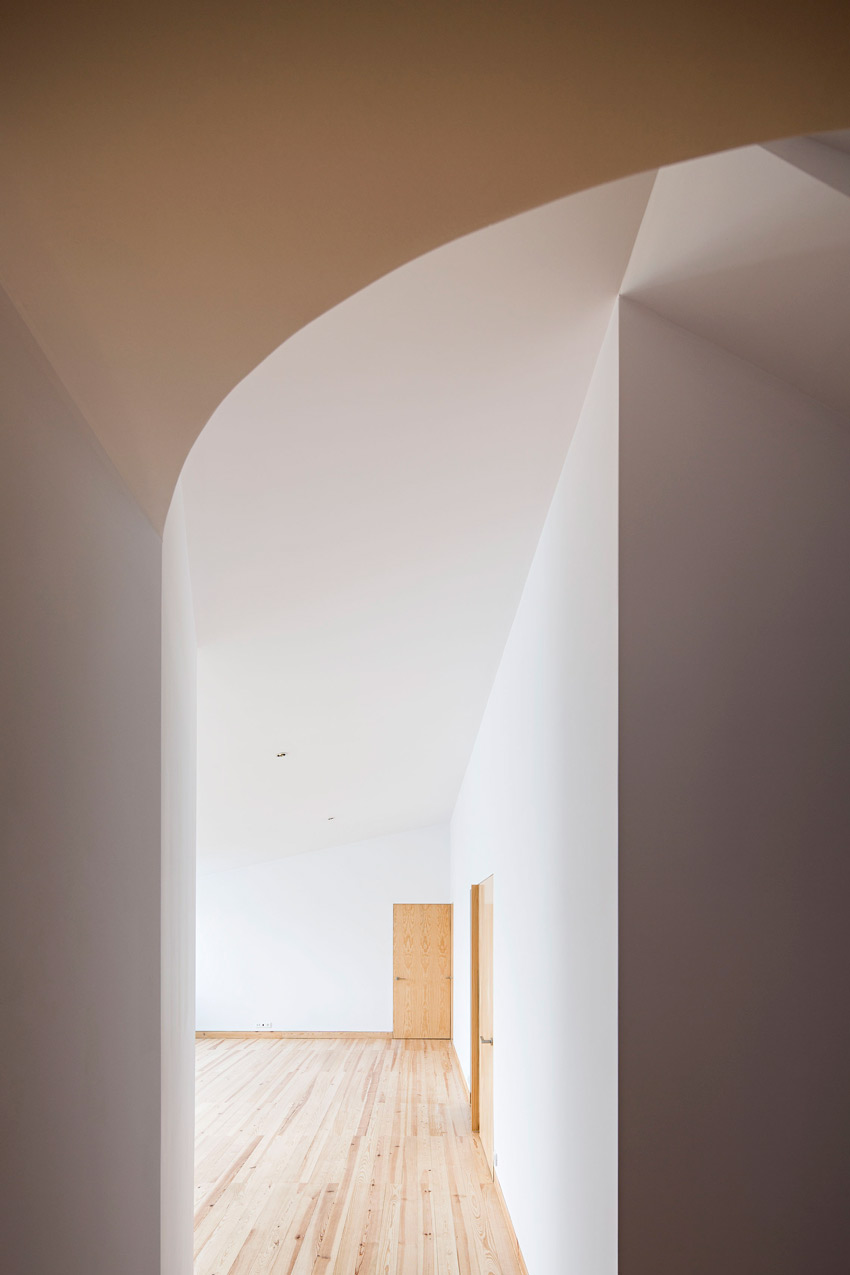
1757 © Nelson Garrido
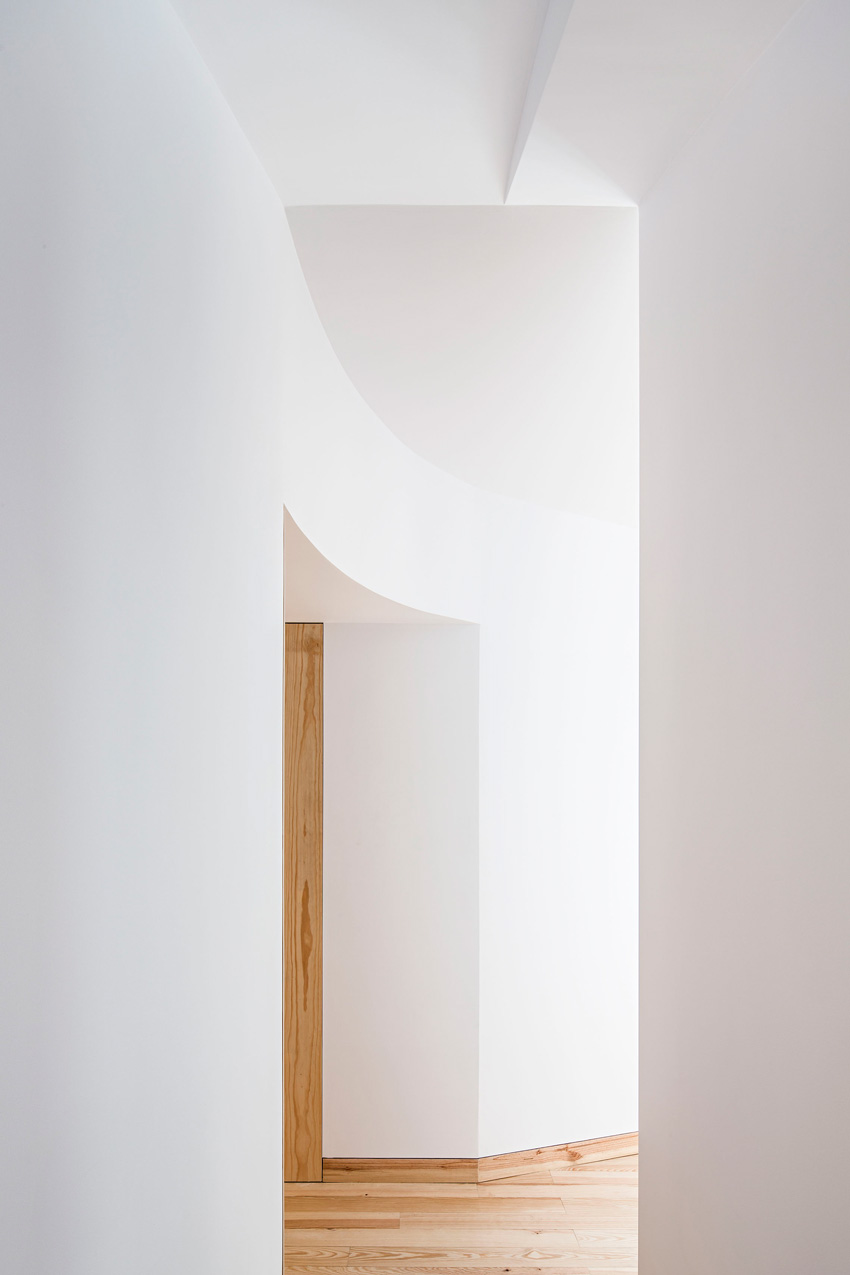
1757 © Nelson Garrido
Vasco Matias Correia: I think it also has to do with the question that is: We have to do useful things obviously, architecture is about solving problems, is it not?! To live, sleep, eat, work, etc.
But the overcoming of this usefulness will be as the ultimate end or the higher end that architecture can have, or that man may have in a certain way. I mean, uselessness is a kind of higher spiritual state in which we no longer have to worry about our most basic needs, and we can overcome all of that.
And because art is so in that domain, because it can operate so freely in that domain, we can see there in a more evident and clearer and more expressive way, what really matters.
Vasco Matias Correia: Eu acho que tem a ver também com a questão que é: Nós temos de fazer coisas úteis obviamente, a arquitetura serve para resolver problemas não é?! Para viver, dormir, comer, trabalhar, etc.
Mas a superação dessa utilidade, será assim como o fim último ou o fim mais elevado que a arquitetura pode ter, ou que o homem pode ter de certa forma. Quer dizer, a inutilidade é uma espécie de estado espiritual superior em que já não temos só que nos preocupar com as nossas necessidades mais básicas, e em que podemos superar tudo isso.
E por a arte estar tão nesse domínio, por poder operar tao livremente nesse domínio, podemos ver aí de uma forma mais evidente e mais clara e mais expressiva, aquilo que realmente interessa.
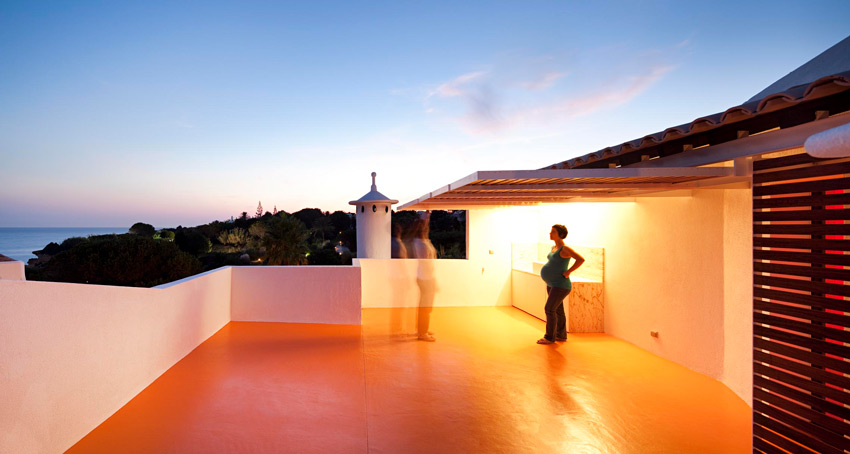
Casa no Levante © Nelson Garrido
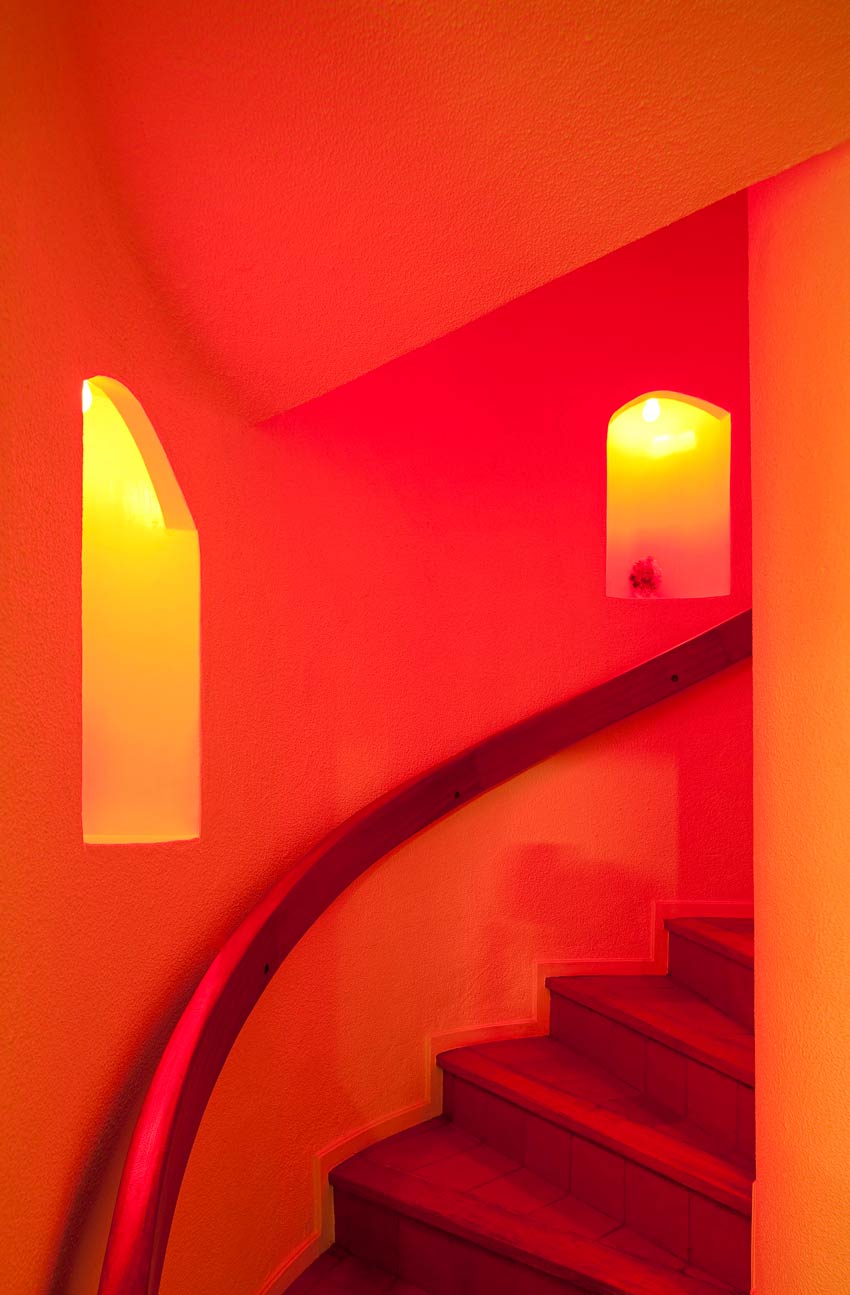
Casa no Levante © Nelson Garrido
— Portugal —
Patrícia Ferreira de Sousa: I think Portuguese architects are professionals who are multi-faceted and able to operate with the necessary tools to make a project, think architecture, think of cities, etc.
And abroad, they are very well known and work very well, but then you can't make omelets without eggs right, you need money to work, so I think the problem of architecture in Portugal often goes through there, there’s not enough money to make a greater investment in architecture.
Now, that we have fantastic professionals and when there’s an opportunity they create projects that are great and recognized, there is no doubt about it.
Patrícia Ferreira de Sousa: Eu acho que os arquitetos portugueses, são profissionais que são multi-facetados e capazes de operar com as ferramentas necessárias para fazer um projeto, pensar arquitetura, pensar em cidades, etc.
E lá fora são muito reconhecidos e trabalham muito bem lá fora, depois não se fazem omeletes sem ovos não é, precisas de dinheiro para trabalhar, portanto acho que o problema da arquitetura em Portugal muitas vezes passa por aí, é não haver dinheiro suficiente para se poder fazer um investimento maior na arquitetura.
Agora que temos profissionais fantásticos e que quando há oportunidade saem projetos óptimos e reconhecidos, não ha dúvidas disso.
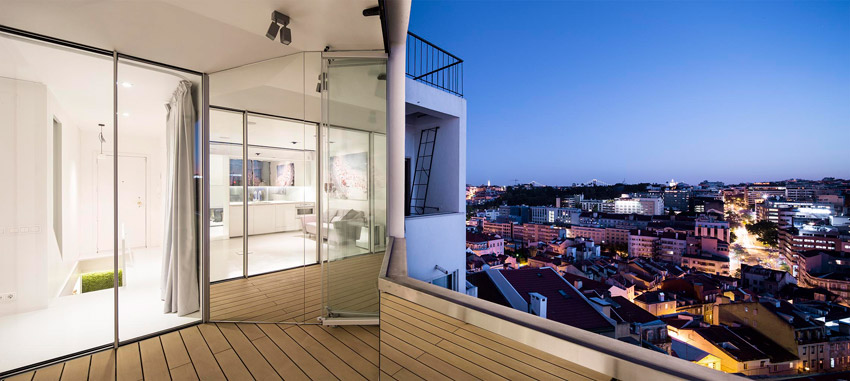
DG1 © Nelson Garrido
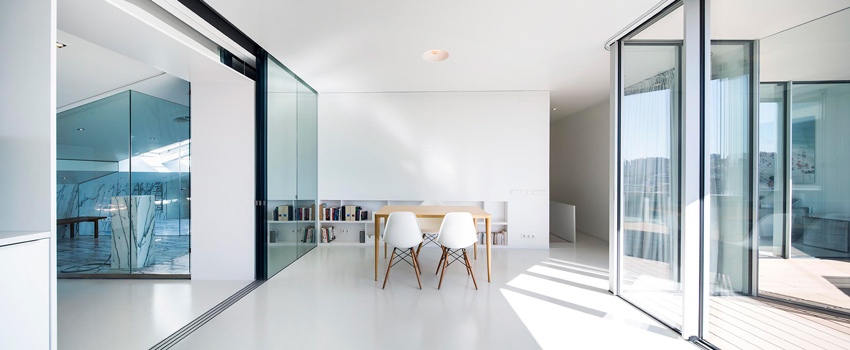
DG1 © Nelson Garrido
Vasco Matias Correia: The image of Portuguese architecture abroad is impressive. Going from Siza and Souto Moura of course, but then there’s a lot of people who are now in their fifties, and then there’s also the younger generations.
And there’s a kind of renovation that is amazing but very solid at the same time. I think there’s still a continuity between generations and a common culture that are very exceptional, for a developed and western country they’re not even very common. It has to do with our condition a bit peripheral and our recent history, there are several issues that lead to this.
How is it that a country with so few means and with a public funding, or with public and private developers often with modest means, not only in financial terms but in terms of the ability to place a qualified commission, the lack of critical thinking, etc, how can you have such a good architecture production and so consistently good over time.
Vasco Matias Correia: A imagem da arquitetura portuguesa no estrangeiro é assim, impressionante. A partir do Siza e do Souto Moura claro, mas depois há um monte de pessoas que estão agora nos seus cinquentas, e depois há outras gerações mais novas.
E há uma espécie de renovação que é surpreendente mas que é muito sólida ao mesmo tempo. Acho que continua a haver uma continuidade entre gerações e uma cultura comum que são muito excepcionais, para um país desenvolvido e ocidental não são sequer muito comuns. Tem a ver também com a nossa condição um bocado periférica e a nossa história recente, há várias questões que levam a isso.
Como é que um país com tão poucos meios e com um financiamento público, ou com promotores públicos ou privados muitas vezes com meios modestos, não só em termos financeiros mas em termos de capacidade de fazer uma encomenda de qualidade, a falta de massa crítica, etc, como é que se consegue ter uma produção de arquitetura tão boa e tão consistentemente boa ao longo do tempo.
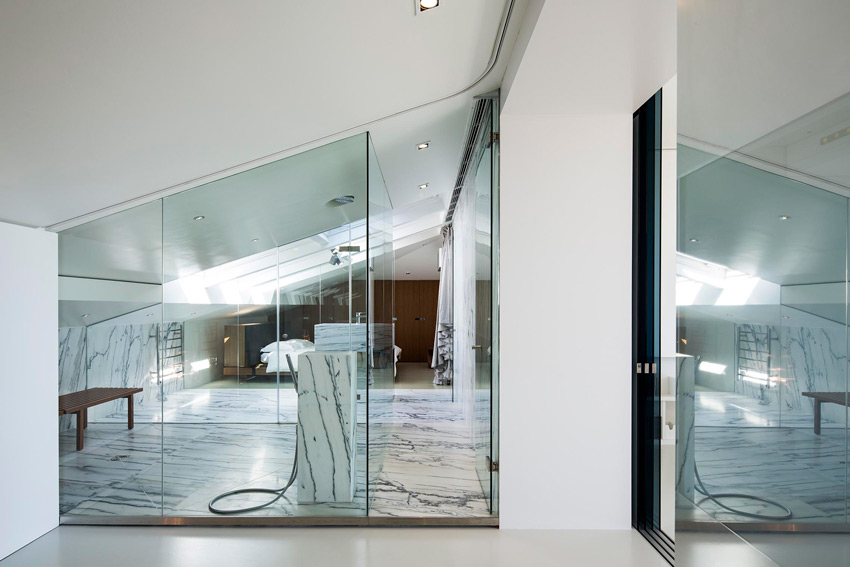
DG1 © Nelson Garrido
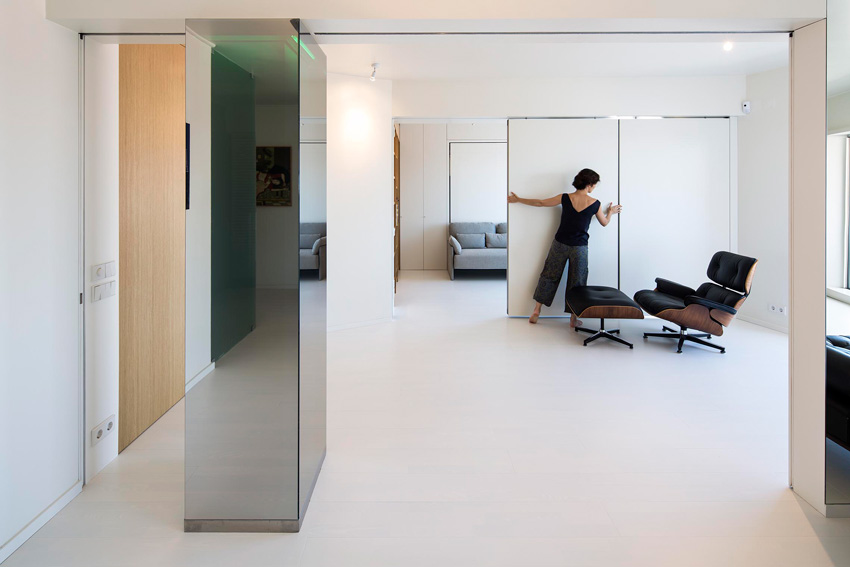
DG1 © Nelson Garrido
